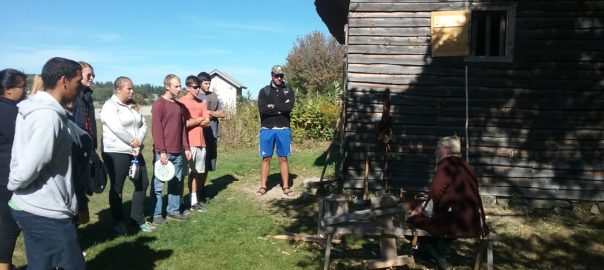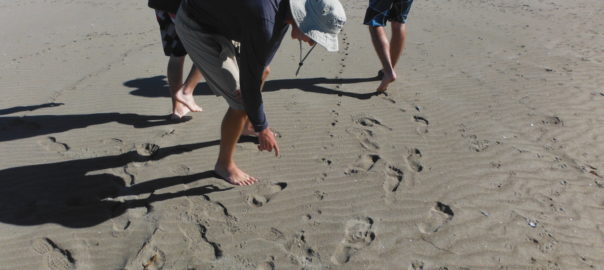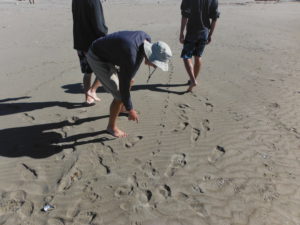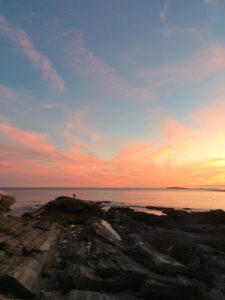
Each time the ESS establishes a brief residence in the Midcoast region of Maine, on the Pemaquid peninsula, I bring the students to a local landmark for a study break to learn a bit of local history and gain a ‘sense of place’. Many books and PhD theses have been written about the history of this region. Indeed, the students will read scientific journal articles of seminal works of marine ecology research, at sites we visit on this very peninsula. A perennial favorite site to visit is the lighthouse at Pemaquid Point.
The simple, scenic lighthouse is one of the earliest and most famous of Maine’s lighthouses. It is the lighthouse featured on the Maine State quarter, by popular election of the people of this great state. The lighthouse’s understated beauty is perhaps upstaged by the fantastic rocky promontory upon which it is set. After a few weeks of geology to start the ESS, the students were quick to identify the metamorphic gneiss, with prominent intrusions of igneous quartz and plagioclase.

Most of the students climbed to the top of the lighthouse tower to see the ‘fourth order Fresnel lens’ that produces the light signal. They also visited the little museum with displays telling of the lighthouse and the surrounding region. They clambered over the rocks, and took note of the zonation of organisms on the rocky intertidal zone that will be the subject of their next study.

But the main purpose of the visit here was to open a window into a sense of place. I spent the summers of my youth, and two years obtaining my Master’s degree, here on the Pemaquid peninsula. My relationship with this place is as familiar and nourishing as with a sibling. There is no hope of creating such a feeling in barely a week with students new to the location. Yet by intentionally encouraging them to incorporate all they observe and experience, through all the senses and via different perspectives, I hope they will look at locations not just as a study site with a narrow focus on the specific lesson, but develop a sense of place, a holistic feeling for the connections between the natural world, the history of human activity here, and their own experience in this space, this time. I hope they develop the capacity to feel the sense of wonderment and awe for this special place, and the special experience of the ESS. Cue the eye rolls, “there he goes again with the wonderment and awe…”
























